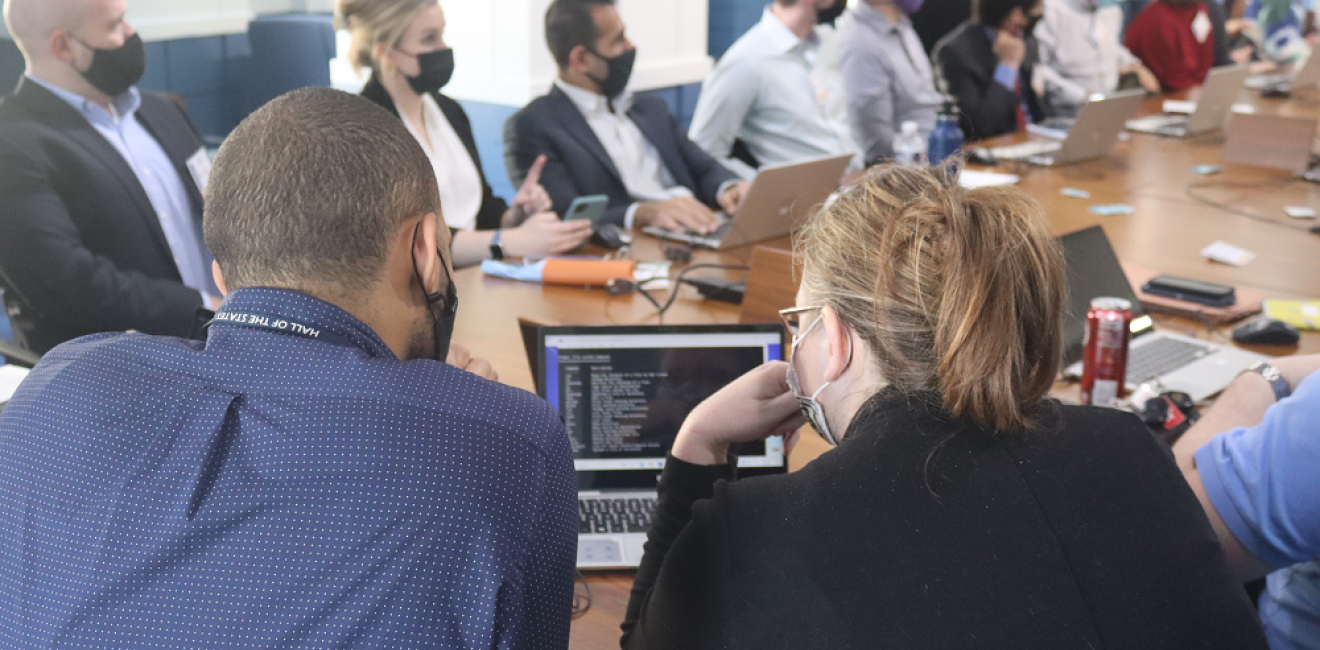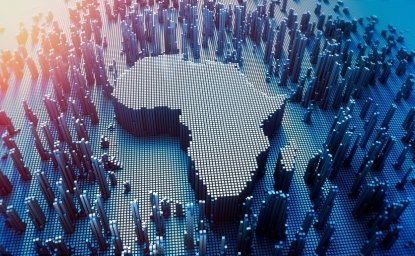
A blog of the Science and Technology Innovation Program
In the United States—whether you are sitting in policy, industry, think tanks, or academia—there is an underlying concern, which is not always explicitly voiced, that we are not adequately capturing the full potential of emerging technology—capitalizing on the benefits and mitigating the risks—given the current geopolitical moment.
If we frame a goal of policy as the allocation or (re)allocation of resources that society or business would not have ready access to absent intervention, then keeping policy makers informed of significant developing trends and where policy intervention can most help right now is imperative. It is also imperative to discuss how to avoid policy measures that would lead to unintended or counterproductive consequences. For technology policy to be effective (whether to make us more innovative, more competitive, more equitable, more secure, more sustainable, or more resilient), policymakers need working familiarity with emerging technology trends from a trusted, objective resource that draws from relevant industry and academic communities of practice. This education and community building effort needs to be sustained in a reliable and trusted way—that is exactly what the Wilson Center’s Technology Labs and Masterclasses were created to address.
Science and Technology Education for Policymakers
The Wilson Center's Technology Labs provide participants with a foundation for core science and technology policy topics through six-week seminar series focused on three core subject areas: (i) Artificial Intelligence (AI), (ii) Cybersecurity, and (iii) Digital Assets. Alums of these Technology Labs, alongside alums of the Wilson Center’s Foreign Policy Fellowship Program, also have access to a series of Technology Masterclasses throughout the year. These stand-alone seminars offer deeper dives into a range of topics including semiconductors, 5G networks, critical infrastructure protection, AI safety, and the evolution of space-based assets. Each Technology Lab and Masterclass session is led by top technologists and scholars drawn from the private, public, and non-profit sectors to provide mid-to senior-level Congressional and Executive Branch staff with a free peak behind the technology curtain.
Policy at the Intersection between AI and Semis
What does this effort look like in practice? Over the course of a recent two-part Masterclass series, the Wilson Center’s Science and Technology Innovation Program (STIP) tackled the semiconductor industry’s role in driving AI innovation. This Masterclass series offered policy participants an opportunity to ask questions of leading experts in these fields in a closed door, not for public consumption environment – allowing the free flow of ideas. In return industry participants had a chance to learn more about pressing policy concerns directly relevant to their work. Session One, AI and the Semiconductor Supply Chain, explored how AI is being and can be used in practice in the semiconductor industry itself from design to packaging. Session Two, The AI Chips of Today and Tomorrow, explored the importance and evolution of semiconductors for AI innovation and applications more broadly including vast implications of further AI developments for all.
Core policy themes emerging from this Masterclass included the following:
- In the AI triad (data, algorithms, and compute power), specialized AI chips play a critical role in advancing AI innovation. Understanding what those chips are and how they differ from general purpose processors or application specific circuits is important for policy makers to grasp and was a key learning outcome in our Masterclass. Moreover, while Moore’s law posits that the number of transistors in an integrated circuit doubles about every two years (and today’s chips can have more than 80 billion processors), the amount of compute needed to train AI models doubled every 3.4 months between 2012 and 2018—underscoring the need to foster specialized AI chip development.
- AI chips face the same chokepoints and national security concerns as the semiconductor supply chain more broadly. While we are witnessing the emergence of a diversity of players in the AI chip design space, production of AI chips persists as a critical bottleneck. Moreover, AI chips make up only a small fraction of production for the world’s most advanced semiconductor foundries today, TSMC and Samsung, who produce predominantly in Taiwan and Korea. The need to increase compute power for AI applications running on specialized AI chips heightens the urgency for the United States to act on a semiconductor policy that addresses supply chain vulnerabilities.
- Our AI future is deeply dependent on talent: both the development of and access to a world-class workforce. Education and immigration policies alike are critical to keep the United States from losing leadership in the ferocious global race for talent at the AI hardware/chip level as well as at the application and design level for products or services that AI will enable or disrupt. Education is required at all levels from stimulating the very young - our scientists and engineers of tomorrow - to retraining the workforce of today to embrace AI tools. Immigration policy, on the other hand, plays an integral role in ensuring we can attract and retain the world’s best talent.
- Anticipating the ethical implications of AI early is deeply important. Policies developed with the broadest consensus and understanding give industry proper, clear guardrails early on. Lack of policy clarity, on the other hand, runs the risk of sending mixed signals to industry and after the fact interventions may unduly hinder industry investment and adoption.
- The semiconductor industry not only produces enabling hardware for AI innovation, it showcases AI’s promise in the area of design, manufacturing, and metrology (creating complex chips far beyond what was previously possible reliably and in a fraction of the time). The industry’s sporadic uptake of AI in its own processes also illustrates the limitations in assuming AI is a “one size fits all” tool for all potential problems.
- Fostering wide-scale adoption across the semiconductor supply chain has been challenging. Yet, adoption is an essential testing ground for and driver of AI applications. Policy measures that allow broad access to advanced AI platforms, data for model training purposes, and other enablers will also be critical for broadening the adoption aperture. Specifically, adoption and contributions from small and medium sized innovators.
Apply Today
Technology issues, such as artificial intelligence and semiconductors, occupy a significant share of Legislative and Executive Branch agendas. It is critically important that our policy community be well served by trusted, reliable sources as it seeks to understand these complex subjects.
With limited time and a wide range of complex and pressing issues on your agenda, the Wilson Center’s Science and Technology Innovation Program (STIP) can provide you with that much needed foundational and ongoing support.
In fact, applications are currently live for our upcoming Congressional AI Lab (due June 4th). We hope to see you there.
Authors


Partner, BDT & MSD Company

Science and Technology Innovation Program
The Science and Technology Innovation Program (STIP) serves as the bridge between technologists, policymakers, industry, and global stakeholders. Read more





